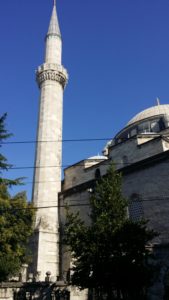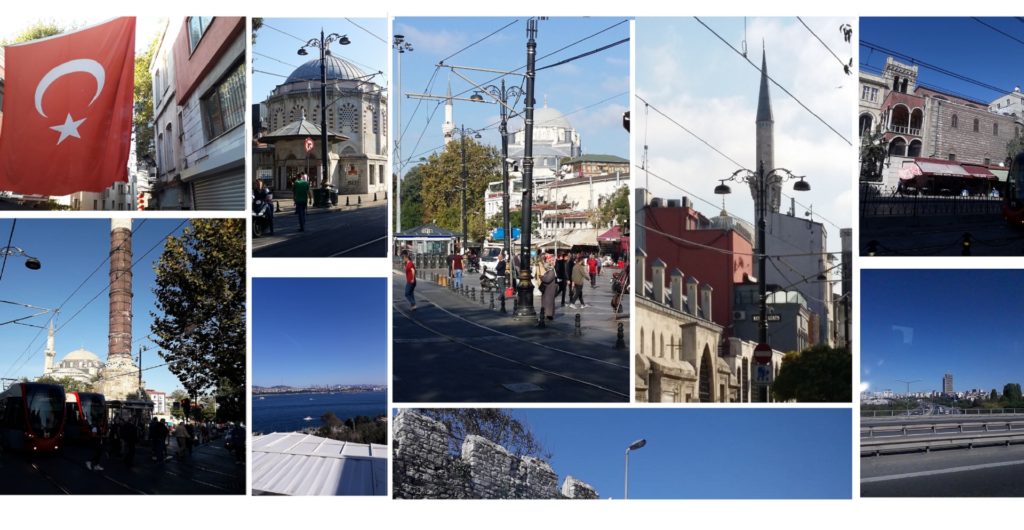
In Istanbul, you simply adjust to the time you have at your disposal. And the time you need to visit the bazaars and restaurants and the time you need to visit the cultural monuments, the time for time travel through the ages. Istanbul is a city museum like cake layered. Tectonic disturbances (frequent earthquakes) have arranged some cultural and historical monuments in layers one below the other and one above the other. Which is why Constantine’s Palace was located below the Blue Mosque and became its foundation, and the Hippodrome below Sultanhamt Square. The square is a zero starting point and the most important place to visit the city. The nucleus of different epochs, much more zoning after these eras and rulers than the sultan after whom the square was named, because it did not leave a special mark in history except the beautiful Blue Mosque, and many civilizations and epochs met on that square. Throughout this square, history has written its most important pages, not only important for the square but often for all of humanity of a particular era.
I’ve written as many as four blogs about this experience in such a small space. In this one blog I decided to take these walks through the streets of Istanbul, impressions after visiting the bazaars and restaurants.
In Istanbul you do not need an alarm clock, before the sunrise from all the surrounding minarets ezani for sabah prayer echoes, which is not only a call for prayer, but an alarm that marks the beginning of the day, and no more sleep if you want to feel the magic of Istanbul. Immediately after the spreads and breakfast were done, we left the apartment, because every moment was important and this rule applied to every new morning spent in Istanbul.
The first morning we climbed the hill for about five minutes and that day just wanted to walk the streets of Istanbul.
We met at Taksim Square and headed for Kapali Charshy or Grand Bazaar. We went down the cobblestone road and climbed constantly listening to the arrogant driver (usually the van) not run past us, and let’s not forget to move aside.
The desire to see as much as possible within the time available outweighs your fitness level, especially when it comes to Istanbul. As many times as you come to Istanbul, you want to come back again and feel that you have been there all the time and once before, even if you have not.
We first entered the Kapali Charshy, which was founded back in the 15th century, this large market with long corridors like labyrinths. It has never happened before, and even now to enter the shed and go out in the same place, it is almost impossible. Each long corridor with shops poured into another similar to each, each with its own assortment of products, leather, silk, rugs, jewelry, wardrobe, and it seems impossible for you to go around in one go … Egyptian markets or Space Bazaar, where our fitness was at an end, which was because of the many kilometers traveled and because we were not aware of the time we spent visiting, time somehow flew by. There is still much more to visit, but some other time.
Afterwards, we headed for lunch to a nearby restaurant and tried some specialties with veal, chicken and mushrooms in earthenware. The specialties were served in these pans on a plate, so they were still boiling on the plate as if they were on a hot stove. Each day we tried a different dish, mostly fish, and we ate Pide for dinner.
The shops’ windows in Sikechy Street were extraordinarily arranged, especially those with a mature pomegranate, whose juice was squeezed and poured on every corner.
Along the way, we have seen and recorded many buildings from the past centuries, mainly mosques, but also other buildings.
Going through Istanbul, not getting to where the Marble Sea and the Bosphorus meet, is an incomplete experience. Get down to the Galata Bridge, which connects Europe and Asia, from where you can see the Galata Tower and the new large mosque of Camildja with six minarets. The mosque, which is the counterpart to the Blue Mosque on the European coast, is by no means to be missed. Although we returned to the metro because of fatigue, staying at a place where two continents merge and the architecture of the overgrown and this time was a special experience. We crossed the bridge connecting Europe and Asia by van and on arrival from the airport. On the bridge on both its dimensions stood many people with hooked hooks, waiting for the fish to bite the bait, despite all the hustle and bustle.
Playing music on the sidewalk of chanting young men and a bustle of people from different parts of the world, the Bosphorus sun gave the city a special touch in the afternoon, as if everyone had gathered to wash off the new day.
Despite the large number of inhabitants and the large number of tourists, there was no waste on the streets of Istanbul. Street waste collectors were responsible for this. They were hauling huge prism-shaped white sacks, which were mounted on two wheels similar to market kits. Due to their size, the valuable young men had to be dragged on their backs by almost running. They stalled and bagged every piece of paper they found on the street, then hurried to their destination with full bags.
Going down to Galata Bridge we toured Topkapi outside and before visiting it inside, we enjoyed every moment. We tried to record these moments in our mobile phones and in our minds, because most of these moments are events, which are fondly remembered. Returning by van for an hour and a half to the airfield, we passed by the old walls of Constantinople, we saw the Blue Mosque on the other side and sank the Hippodrome from the Roman Empire; . We also saw a lighthouse, near the airport, of some new buildings that looked like the ones in the Emirates. We regretfully saw that Arasta Bazaar was opening that morning, we did not get to visit the bazaar, as well as many more. Istanbul is a city that whenever you come back you feel like you have missed a lot, and it keeps calling you over and over again.
Balkantimes.press
